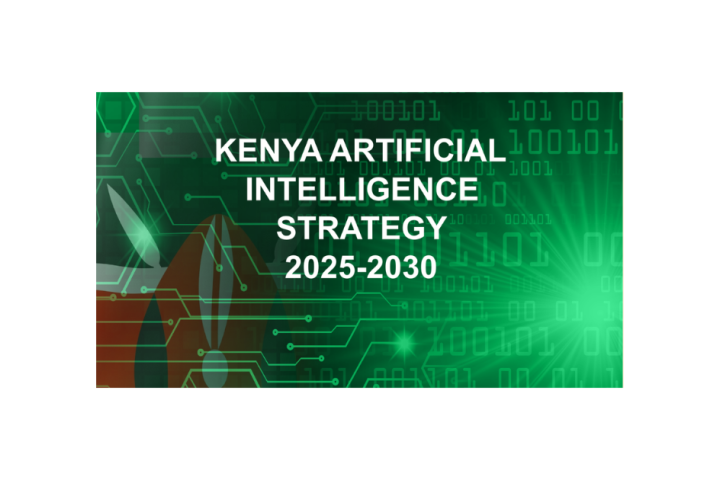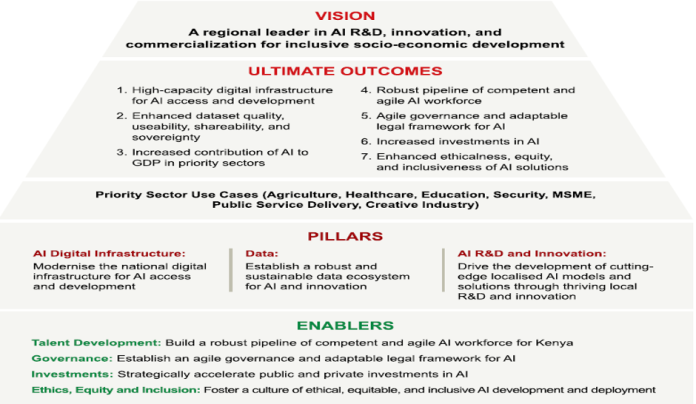A Review of Kenya Artificial Intelligence Strategy 2025-2030: The Hits and Misses

AI has human-like cognitive and decision-making capacities. AI is capable of analysing large amounts of data in short time and compared to other 4IR technologies, it has better abilities than humans. AI adoption is expected to continue and take control of business operations marking advent of technology-led environment.
AI societal impact: Industries heavily reliant on human decision making and execution have been highly disrupted. Health and agriculture industries are most affected. In healthcare and because of its capacity to analyse large amount of data, AI has been instrumental in diagnostics, drug discovery and predicting infection rates especially during Covid-19 pandemic. In labour, ILO estimates that 2.3% of employment risks automation due to exposure to generative AI. These statistics have a different impact for developing countries whose capacities determine whether they become net importers of AI.
AI Governance is against different priorities and context. Developing countries prioritise capacity and ethics while developed countries prioritize economic growth and efficiency. Complicating governance are the inadequacies of existing frameworks resulting from the nature, development and unique human-AI relationship. In the South African patent application, DABUS was listed as the sole inventor. Agentic AI systems like self-driving cars, are designed to reduce human involvement and oversight, technical properties which make risk mitigation difficult. In Kenya, AI deployment is across all sectors and the country is leading in the development of AI solutions in sub-Saharan Africa. However, the lack of responsive regulatory frameworks is a challenge restricting optimal AI adoption.
The nature of AI and Flexible and adaptable governance models are key in balancing innovation and protection. Some governance models include legislations, regulations, national and regional strategies. In March 2025, Kenya launched the National Artificial Intelligence Strategy 2025-2030 designed as an adaptable governance model.
Hits:
Vision: Boldly encapsulated as ‘Kenya, the regional leader in AI R&D, innovation and commercialisation for inclusive socioeconomic development.’
Objective: To establish a robust AI governance framework.
Implementation: Guided by eight principles, an important bridge between practice and drafters’ intention.
Priority use cases: Identified as health, education and agriculture sectors as priority areas.
Public Participation: The Strategy resulted from a consultative process between the State, local communities, civil society and international partners in compliance with national values and principles of governance under Constitution of Kenya.
Misses
Place of Indigenous Communities: The Strategy does not capture complexities of new technology, indigenous communities and governance. Local communities are regarded only as data generators, system validators and passive consumers. To the contrary, indigenous communities are creators, custodians and users of critical societal knowledge. For instance, AI healthcare solutions cannot be operationalized in the absence of local languages. The communities must produce (adapt and customize these solutions to fit their purpose) before they can use or consume them. Communities become prosumers. This is not co-creation, which is a collaborative effort between parties a process local communities are excluded from.
Governance: Conflicts in knowledge governance are not new in Africa with studies documenting inadequacies of IP frameworks. Exclusive IP rights in a compilation of African languages have restricted further linguistic research. Regardless, the Strategy only identifies IP to the exclusion of communal governance structures. The structures are embodied in customary laws.
Summary of the AI Strategy
